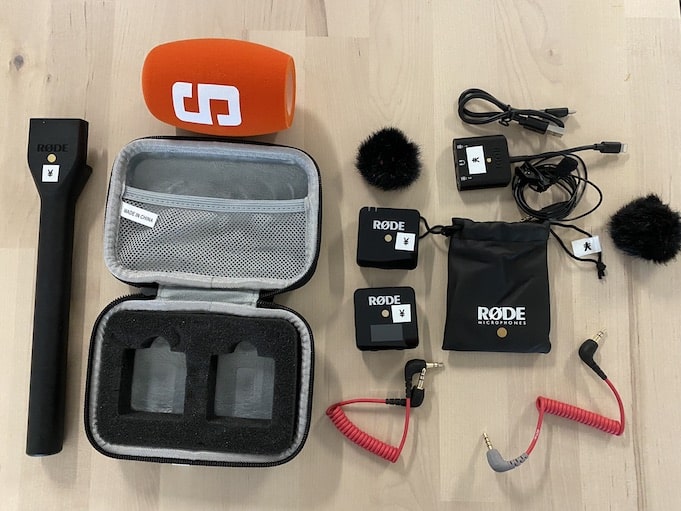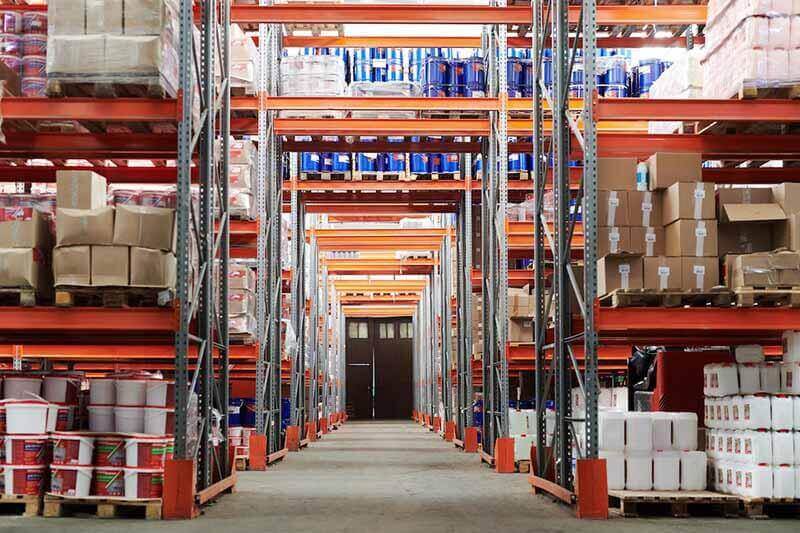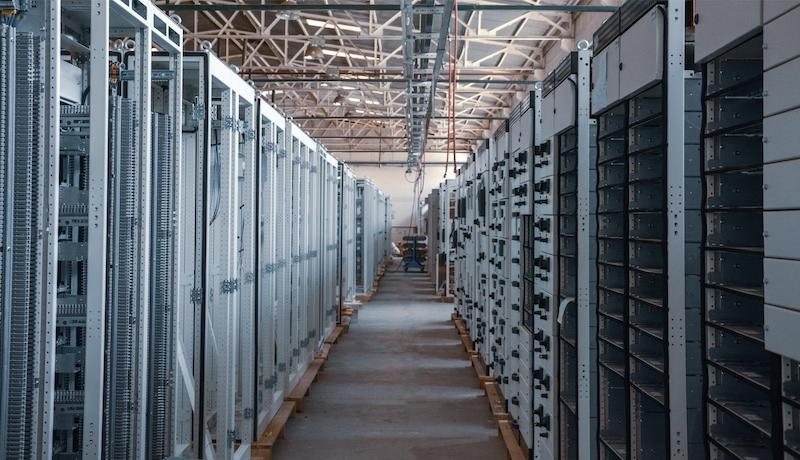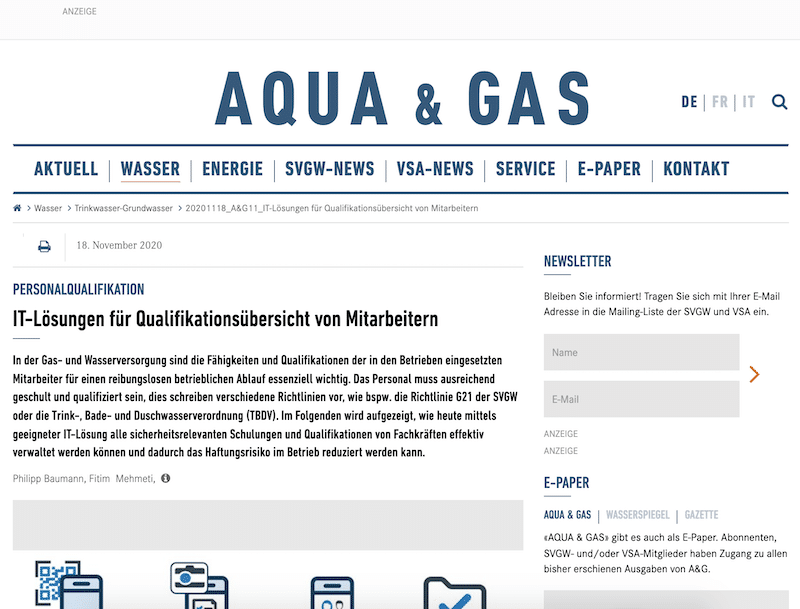
Key Takeaways:
- Efficient warehouse inventory setup is essential for smooth operations and cost-effective management, requiring thorough planning and design considerations.
- Proper tools and technology, such as storage racks, barcode scanners, and RFID systems, are crucial for optimizing inventory management and streamlining processes.
- Adapting to technological changes and integrating the right software solutions ensure a seamless transition and enhanced efficiency in warehouse operations.
In This Article:
- How to Set up Warehouse Inventory
- How to Organize a Warehouse Inventory
- How Do You Plan a Warehouse Layout?
- Practical Tips for Improving Warehouse Space
- Asset Management Software in Use by Our Customers
- Storage Solutions to Manage Inventory in Warehouse
- Warehouse Inventory Control and Maintenance
- Adapting to Technological Changes When Managing Warehouse Inventory
- Frequently Asked Questions About How to Set up Warehouse Inventory
How to Set up Warehouse Inventory
When it comes to setting up warehouse inventory, you need to ensure that the process is smooth and efficient to store, manage, and retrieve goods successfully. The main steps to set up warehouse inventory include having a thorough plan and design. For instance, you need to ensure the warehouse layout, storage space for different types of inventory, and have a workflow process in place.
Thus, having proper tools for the warehouse setup requires storage racks, shelves, and heavy machinery such as forklifts to store and retrieve goods. Additionally, you need to ensure that proper technology is used in warehouse operations. Thus, you need to ensure that there is proper inventory management tools, barcode scanners, and RFID technology to track and streamline inventory, improve accuracy, and enhance overall efficiency.
Moreover, you need to ensure that there are items such as conveyor belts and automated guided vehicles (AGVs) to optimize warehouse processes, reduce manual labor, and increase productivity.
In summary, to have a proper warehouse inventory setup, you need to ensure that the right tools and technology are used. This lays the groundwork for efficient and cost-effective warehouse operations, contributing to the success of your business.
What Are the First Steps in Managing a Warehouse Inventory?
The first steps in managing warehouse inventory involve thorough planning and tool selection. This ensures that operations are efficiently managed. It’s important to ensure adequate space, as it determines effective inventory storage. This entails studying the warehouse layout, calculating storage requirements, and optimizing space, which can be achieved through strategies such as vertical stacking and aisle configuration.
Thus, choosing the right equipment, such as pallet racks, shelving units, and bins, ensures proper product storage. Additionally, investing in items such as forklifts, pallet jacks, and conveyor belts ensures proper material handling and streamlined inventory movement, improving efficiency and reducing labor costs.
Moreover, integrating inventory management software, barcode scanners, and RFID enhances inventory accuracy and streamlines operations.
Therefore, focusing on preliminary steps like planning space and selecting the right equipment ensures a solid foundation for warehouse inventory systems. This leads to improved productivity and customer satisfaction.
How to Organize a Warehouse Inventory
In order to organize a warehouse inventory system, you need to ensure a strategic decision-making process. This includes determining where to keep certain items to maximize efficiency and accessibility. One way is to categorize items in your inventory management system based on size, weight, frequency of access, and storage requirements. This ensures that high-demand items are stored in easily accessible areas, reducing travel time and enhancing productivity.
Thus, it’s important to have methods to organize and manage storage solutions based on inventory type. For instance, shelving units or bin systems can effectively utilize space for small and fast-moving items. Implementing a delegated storage system for seasonal or slow-moving items helps utilize specific spaces and streamline inventory management.
Moreover, by utilizing designated spaces such as mezzanine floors, flow racks, or automated storage and retrieval systems (AS/RS), you can enhance warehouse optimization and reduce storage space.
Thus, by employing efficient organizing methods and tailored storage solutions, you prioritize different types of inventory, utilize space effectively, improve inventory accuracy, and streamline overall warehouse operations.
How Can Technology Assist in Warehouse Inventory Control?
Technology can assist in warehouse inventory control, and this can be done by implementing barcode systems. The barcode system brings about many benefits, such as inventory tracking, better accuracy, efficiency, and faster data entry and retrieval rates. By using barcode scanning, staff can rest assured that they will be able to track and find their inventory items, thus minimizing errors caused by manual entry. Moreover, with the use of barcode scanning, you can receive inventory updates in real-time. This provides staff with accurate and up-to-date information regarding stock levels and their last location.
To add to that, barcode systems are best used as they provide visibility of the inventory, enabling better monitoring of stock movement and ensuring timely replenishment and ordering of stocks.
Another technology that would be of great use to improve warehouse inventory control is radio-frequency identification (RFID) systems. They are best used to track and monitor inventory. Warehouse management software (WMS) is used for inventory management and optimization, while automated storage and retrieval systems (AS/RS) are used to ensure that there is enough storage and easy retrieval of inventory items.
Thus, by using these technologies, you can rest assured that there is improved accuracy, efficiency, and increased productivity in warehouse operations.
What Is the Best Program to Keep Track of Inventory?
There are a few standout programs for inventory management systems on the market. Systems like Ordoro and Zoho stand out among the rest. Ordoro focuses more on e-commerce inventory management, providing features for shipping management and dropshipping inventory handling. On the other hand, many businesses use Zoho Inventory, which is a cloud-based system. Unlike Ordoro and Zoho, Timly offers a comprehensive solution tailored for both asset and inventory management across various industries. Moreover, Timly provides maintenance planning, digital file management, and IoT technology.
Moreover, Timly is user-friendly and ensures regulatory compliance while offering real-time tracking and monitoring of inventory levels. Its robust user interface and mobile optimization allow users to access and update warehouse inventory records from anywhere, enhancing overall efficiency and productivity. Additionally, Timly employs robust security measures, including encrypted data transmission and GDPR-compliant data processing, to ensure the safety and security of critical information.
When selecting the right warehouse inventory management system, consider these tips to ensure a smooth transition and implementation. First, identify the business requirements. Then, research and evaluate available inventory management systems. Next, request demos and trials from at least three viable candidates. Ensure that the chosen software offers flexibility and customization as the business scales. Once selected, ensure the software passes the pilot stage of implementation before integrating with other essential business systems like accounting software and enterprise resource planning system ERP Provide proper training and support from the software vendor, ensuring extensive training sessions to enable users to use the software with ease.
Over 600 Companies, Schools and Cities Rely on Timly
(No credit card required)
How Do You Plan a Warehouse Layout?
To understand different warehouse layout options, you need to consider space utilization, workflow efficiency, and inventory management. Traditional layouts like flow-through and cross-docking layouts each have their own uniqueness. Flow-through layouts focus on moving items from receiving to shipping locations, while cross-docking layouts aim to reduce storage by directly shifting inbound and outbound shipments.
For those interested in effective warehouse layout planning, start by examining inventory data, traffic flow, and operational needs. Consider product size, handling equipment, and order processing methods. Create a floor plan that factors in required space, minimizes travel distances, and enhances workflow. Test the layout with trial runs and gather feedback from staff for continuous improvement. Regularly review the layout to accommodate changes as the business grows, optimizing warehouse operations.

What Is the Best Layout for a Small Warehouse?
The best layout for a small warehouse maximizes efficiency and flexibility within a limited space. When designing for small spaces, consider the placement of storage racks, shelves, and aisle locations strategically to optimize storage space and streamline workflow. Using vertically aligned space with mezzanine levels or high-density storage options is crucial to maximize storage without expanding warehouse space. Implementing modular storage solutions allows for easy adjustment or reconfiguration to adapt to changing inventory needs as the business expands.
Maintaining flexibility is vital in small warehouse spaces to accommodate fluctuations in inventory levels, demand variations, and business growth. A flexible layout enables reorganization of storage areas, aisle widths, and workflow processes, optimizing space and operational efficiency. With adaptable storage spaces and agile layout designs, small warehouses can meet their business needs and maximize operations.
Practical Tips for Improving Warehouse Space
Here are some practical tips for improving warehouse space:
- First, schedule a thorough assessment of inventory turnover rates and storage requirements.
- Secondly, implement vertical storage solutions such as mezzanines or shelving units to maximize vertical space.
- Ensure that aisle widths are optimized to achieve a balance in storage density, facilitating efficient movement of assets.
- Implement zone picking or ABC classification to organize inventory based on frequency of usage, reducing travel time and enhancing picking accuracy.
- Utilize space-saving storage options like pallet racking, cantilever racks, and mobile shelving to maximize space without compromising accessibility.
- Regularly review and adjust layout and storage configurations based on changing inventory needs and operational processes.
These practical tips can be implemented to enhance space utilization in warehouses, thereby improving operational efficiency and overall productivity.
Example of an Efficient Warehouse
An example of efficient warehouse asset management is one that combines several strategic layouts, state-of-the-art technology, and streamlined processes to enhance operational efficiency. A well-organized and efficient warehouse minimizes travel distances and maximizes storage capacity through vertical stacking and aisle optimization. Additionally, it utilizes inventory management software features and technology such as barcode scanning, RFID, and automated storage and retrieval systems (AS/RS) to ensure accurate inventory tracking, order fulfillment, and reduced labor costs.
Furthermore, an efficient warehouse employs lean principles to reduce waste and improve workflow processes. Practices such as just-in-time inventory management, continuous improvement initiatives, and employee training programs enhance productivity and minimize errors. With these elements in place, an efficient warehouse achieves higher throughput, lower operating costs, and greater customer satisfaction.
Asset Management Software in Use by Our Customers
The Timly software is continuously evolving to meet the needs of our customers. In various success stories, we show you how Timly optimizes processes in companies, thereby saving significant effort. With Timly, inventory management becomes child’s play.

Optimized Device Management With Innovative Self-Inventory
SodaStream is the world market leader for water sparkling systems for domestic use and has a lot of IT equipment at its various locations. Many colleagues now work from their home offices. A digital solution for the efficient management of IT end devices became necessary...

Panasonic x Timly: Driving Technological Innovation
One of the most remarkable aspects of human ingenuity is our ability to innovate. Innovation is embedded in the DNA of consumer electronics giant Panasonic, which has diversified into a number of sectors, from heavy industry to construction...

Manage Video Equipment Efficiently Without Much Effort
The Hamburg media company always does outstanding journalistic work and is characterized by independent reporting. In order to maintain journalistic quality, the teams work with highly specialized devices – these need to be managed efficiently...

Smart City Asset Management – Timly in Use at DIGOOH
The core business of DIGOOH Media GmbH in Cologne is to manage digital city light posters (DCLP) for outdoor use in various cities in Germany. The challenge here lies in making the client’s communication message always available at the right time, in the right place...
(No credit card required)
Storage Solutions to Manage Inventory in Warehouse
When considering storage solutions for managing warehouse inventory, it’s crucial to implement simple and efficient inventory methods. Utilize barcode scanning or RFID technology to access accurate information and manage inventory tracking. Conduct regular cycle counts and audits to ensure inventory accuracy and mitigate discrepancies. Focus on storage space optimization by employing best practices such as utilizing vertical space with tall shelves or mezzanines, establishing easily accessible pickup and order fulfillment zones, and ensuring spacious aisles for material movement.
Another solution is to implement a robust labeling system to enhance asset placement and retrieval. Establish a clear and standardized labeling strategy using alphanumeric codes or easily identifiable labels at storage points. Ensure the labels used are visible, durable, and easily locatable for efficient retrieval. However, it’s important to regularly review and update labeling systems to accommodate any changes. By implementing strategies like optimizing storage space and labeling methods, you can maintain an organized warehouse and streamline the inventory management system.
Warehouse Inventory Control and Maintenance
To ensure effective warehouse inventory control and maintenance, it’s essential to implement strategies for clutter removal. Regular updates and audits of equipment lifespans should be conducted to reduce unnecessary issues and malfunctions. This helps identify devices reaching end-of-life or underutilized equipment. Additionally, strict policies should govern equipment storage to ensure only necessary items occupy warehouse space.
Maintaining an organized warehouse requires cleanliness and orderliness. Establish standard operating procedures (SOPs) for cleaning and organizing tasks, assigning responsibilities to appropriate staff members. Regular cleaning schedules are crucial to removing debris, spills, and dust accumulation from floors, shelves, and equipment. Utilize storage solutions such as shelving, bins, and racks to keep inventory neatly organized and easily accessible.
By maintaining a clutter-free environment and implementing effective strategies, warehouse operations can be optimized for safety and productivity, fostering a safer and more efficient workspace.
Adapting to Technological Changes When Managing Warehouse Inventory
Adapting to technological changes when managing warehouse inventory requires a strategic approach to seamlessly integrating technology while minimizing service disruptions. First, conduct an in-depth assessment of the organization’s needs and potential warehouse challenges. It’s important to ensure that the right technology is selected to address these pain points. Look for solutions that can integrate with existing systems, such as Timly, to reduce implementation disruptions. Provide adequate training and support to staff to facilitate a smooth transition and maximize utilization of the new technology. Evaluate and adjust processes to align with current technology and address any emerging issues.
Staying abreast of the latest technologies in the warehouse sector is crucial for maintaining a competitive edge and driving industry evolution. Dedicate time to research and development to stay current with evolving technologies that can impact warehouse operations. By remaining proactive and well-informed, warehouses can effectively leverage the latest technologies to enhance efficiency, accuracy, and productivity.
Frequently Asked Questions About How to Set up Warehouse Inventory
How to Set up Warehouse Inventory
What Is the Best Layout for a Small Warehouse?
Recommended for You:
Book an online demo - free and without obligation - or create your free trial account directly.








































































































































































































































































